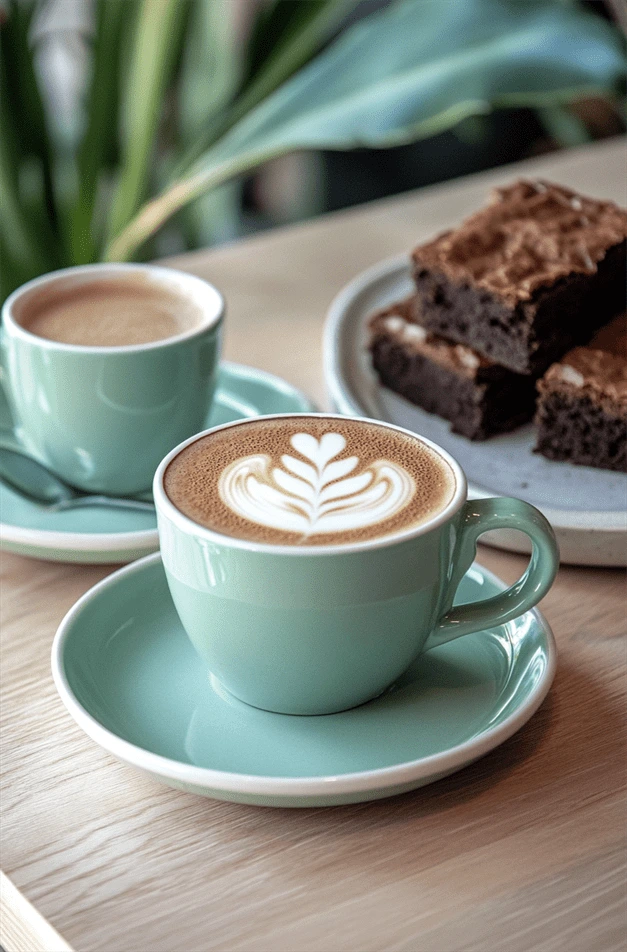Coffee Cup Sizes Explained: Find Your Perfect Brew
Table of Contents
Understanding Coffee Cup Sizes: What You Need to Know
Introduction:
When it comes to coffee, size matters. Whether you’re grabbing your morning brew at a local café or making coffee at home, the size of your coffee cup can significantly affect your experience. The right size ensures that your coffee tastes just how you like it, whether you enjoy a small, concentrated espresso or a larger, more leisurely latte. However, with so many different sizes available, it can be confusing to know exactly what you’re getting.
In this article, we’ll break down the most common coffee cup sizes, the differences between them, and why size is important when choosing your perfect brew. Whether you’re a coffee enthusiast or someone just beginning to explore the world of coffee, understanding these sizes can help you make an informed decision.
1. Common Coffee cup Sizes
When you walk into a coffee shop, you’re typically offered a few standard sizes for your drink. These sizes can vary slightly depending on the establishment or region, but the following are the most commonly used:
1. Espresso (1 oz or 30 ml): Espresso is the base of many coffee drinks, and it’s served in a small cup. An espresso shot typically measures about 1 ounce (30 milliliters). This small serving size is highly concentrated, with rich flavors and a smooth, bold taste. A traditional espresso cup is often a demitasse, which is a small, porcelain cup.
2. Ristretto (0.75 oz or 22 ml): A ristretto is a more concentrated version of espresso. Made with the same amount of ground coffee but less water, a ristretto measures around 0.75 ounces (22 milliliters). This size is usually served in the same type of cup as espresso but offers a stronger, fuller taste.
3. Americano (6 oz or 180 ml): An Americano is a diluted espresso, made by adding hot water to one or more espresso shots. The result is a larger, milder drink with a smooth, less intense flavor. Typically, an Americano is served in a 6-ounce cup, though it can also be served in larger sizes.
4. Cortado (4 oz or 120 ml): A cortado is a popular coffee drink that combines equal parts espresso and steamed milk. The typical serving size is 4 ounces (120 milliliters). It’s served in a small glass or cup and offers a balanced coffee-to-milk ratio, making it less intense than straight espresso but still bold and flavorful.
5. Cappuccino (8 oz or 240 ml): A cappuccino is traditionally served in an 8-ounce (240 milliliters) cup. This classic Italian coffee drink combines espresso, steamed milk, and a thick layer of milk foam on top. The milk foam gives it a creamy texture while allowing the espresso’s bold flavors to shine through.
6. Latte (12 oz or 355 ml): Lattes are larger than cappuccinos and cortados, usually served in a 12-ounce (355 milliliters) cup. A latte consists of one or more espresso shots, steamed milk, and a small amount of milk foam. The larger volume of milk in a latte makes it creamier and less intense than a cappuccino or espresso.
7. Flat White (6 oz or 180 ml): A flat white is similar to a latte but with a higher ratio of espresso to milk and less foam. Traditionally, a flat white is served in a 6-ounce (180 milliliters) cup, offering a strong coffee flavor with a creamy texture.
8. Mocha (12 oz or 355 ml): A mocha is essentially a chocolate-flavored latte, made with espresso, steamed milk, and chocolate syrup or powder. It’s typically served in a 12-ounce (355 milliliters) cup and is topped with whipped cream, making it a sweet and indulgent treat for coffee lovers.
9. Large Sizes: In many coffee shops, large sizes like “grande” (16 oz or 475 ml) and “venti” (20 oz or 590 ml) are popular. These larger cups usually contain a standard espresso shot or two but feature more milk and sometimes syrups or flavorings. A larger size is perfect for those who enjoy a big coffee or for those who like to savor their drink slowly.
2. Why Coffee Cup Matters Sizes
1. Taste and Strength: The size of your coffee cup impacts the strength and flavor of your drink. A smaller cup, like an espresso or ristretto, is much more concentrated and intense, delivering a robust coffee experience. On the other hand, larger cups like lattes or mochas have more milk or water, resulting in a milder taste and smoother texture.
2. Personal Preference: Coffee cup size is deeply tied to personal preference. Some coffee drinkers prefer a small, strong shot of espresso, while others opt for a larger, milder drink. Understanding the standard sizes will help you decide which coffee best suits your taste buds.
3. Milk-to-Coffee Ratio: For drinks like lattes, cappuccinos, and mochas, the size of the cup determines the milk-to-coffee ratio. Larger cups tend to have more milk, making the drink smoother and creamier. If you enjoy a stronger coffee taste, you may want to choose a smaller size or a drink with a higher concentration of espresso.
4. Serving Size and Caffeine Intake: The larger the coffee cup, the more caffeine you’re likely to consume. While a single espresso shot contains around 63 milligrams of caffeine, a larger drink like a venti latte can contain two or more shots, contributing to a higher caffeine intake. For those looking to manage their caffeine consumption, understanding the sizes is crucial.
3. Choosing the Right Coffee Cup Sizes
Choosing the right size depends on your preferences and needs. Here are some factors to consider:
1. Strong vs. Mild Coffee: If you love the bold, intense flavor of coffee, smaller cups like espresso (1 oz) or cortado (4 oz) may be ideal. These options pack a punch and allow the coffee’s natural flavors to shine through. If you prefer a milder, creamier coffee, opt for a latte (12 oz) or mocha (12 oz).
2. Temperature and Volume: If you’re someone who likes to savor their drink over time, larger cups such as a 16 oz (grande) or 20 oz (venti) may be more appealing. These drinks often cool more slowly due to their larger volume, letting you enjoy your coffee at a comfortable temperature for longer.
3. Time of Day and Purpose: Your choice may depend on the time of day or your purpose. If you need a quick pick-me-up in the morning, a shot of espresso or a cappuccino might be all you need. But if you’re planning to spend the afternoon working in a café or relaxing, a larger drink like a latte or mocha can provide a more satisfying experience.
4. Dietary Considerations: If you have dietary preferences or restrictions, consider how different drinks may fit into your daily routine. Lattes and mochas often have higher calorie counts due to added milk and syrups, while black coffee options like espresso or Americano tend to be lower in calories.
4. Conclusion
Coffee cup sizes may seem like a small detail, but they play a crucial role in your overall coffee experience. From the concentrated punch of an espresso shot to the creamy richness of a latte, each size offers a different experience. Understanding these sizes will help you navigate your coffee choices with confidence, whether you’re at a café or preparing your morning brew at home. Ultimately, the best size is the one that aligns with your taste preferences, lifestyle, and caffeine needs.

